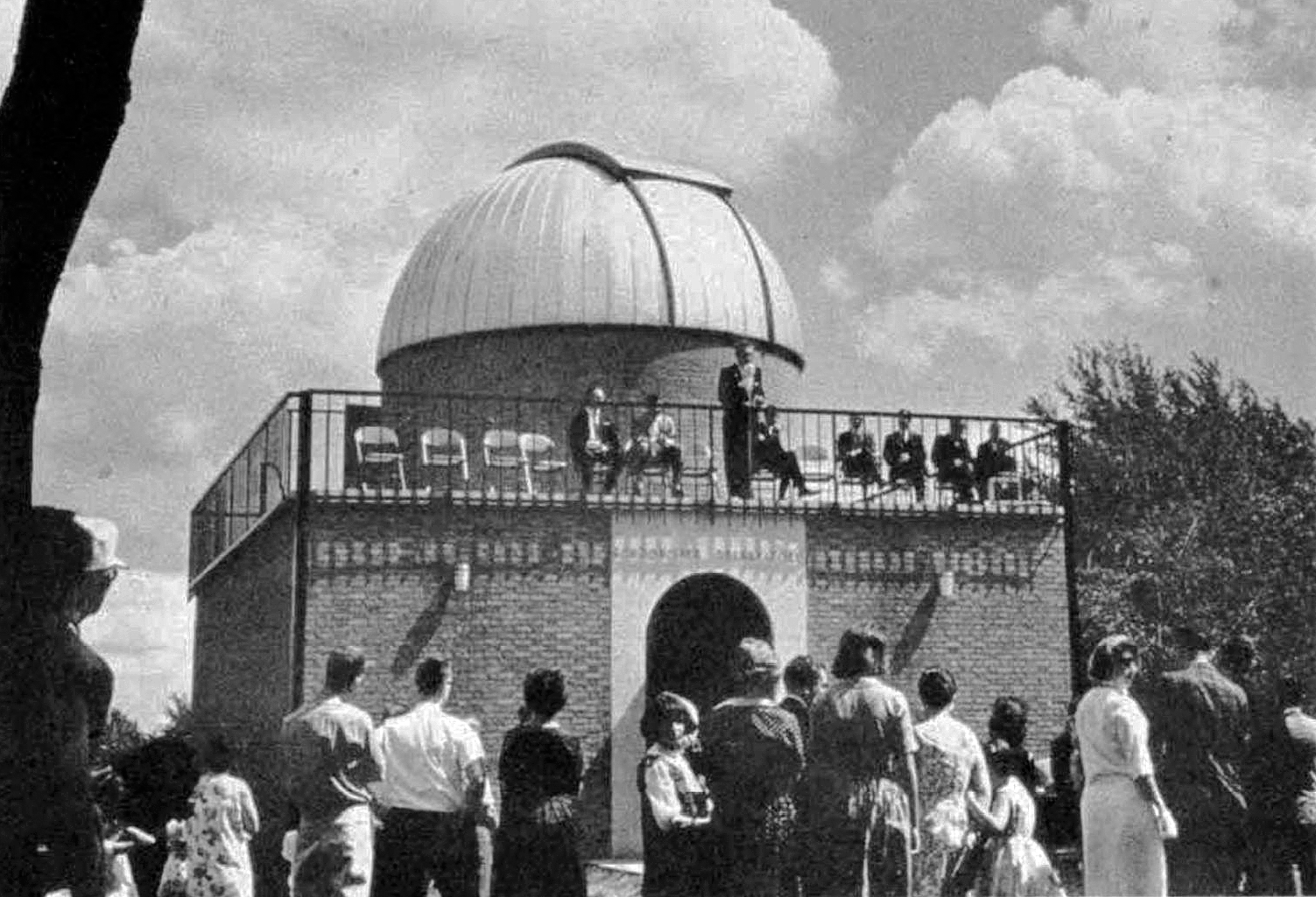History of the Lima Astronomical Society
and Schoonover Observatory
The Lima Astronomical Society was founded as the Lima Astronomy Club in 1952 by Herbert Doughty, a seventh grade student. Herb obtained the names of people who checked out astronomy-related books from the public library, and contacted those people to see if there was interest in starting an astronomy club.
There was a good deal of interest from those Herb contacted, and the club began to meet in people’s homes. Over time, the Lima Astronomy Club grew to include professionals, homemakers, and students, all with a common interest of studying the cosmos and reaching out to others.
Several years after the club formed, members realized the need for a dedicated location for the community and the club meet and observe.
Through the vision of the Lima Astronomy Club, the philanthropy of the Thomas R. Schoonover family, and the cooperation of the City of Lima, Schoonover Observatory became a reality in 1964.
The observatory is located at Schoonover Park, in Lima, and provides elevated views of the park, Schoonover Lake, and the cosmos.


The first telescope installed in the observatory was built by Society members from the ground up. They created a 12 ½-inch Newtonian Cassegrain telescope, which was installed and used for over 20 years.
The mirror in this telescope has historic ties to the 200-inch Hale telescope at Palomar Observatory in San Diego, California. Corning Glass Works in New York was selected to create the mirror blank for the Hale telescope. At the time it would be the largest single piece of glass ever made.
The first attempt was unsuccessful due to a failure of the mold. After a successful second pouring, the molten Pyrex® glass remaining in the crucible was poured into smaller mirror blank molds. One of the original Lima Astronomy Club members visited Corning Glass Works and obtained one of those mirror blanks. This mirror blank was painstakingly hand-ground by Society members, resulting in a telescope with superb optics.
This telescope was taken out of commission after two decades of use due to warping of the wood frame, and is now on display on the first-level of Schoonover Observatory. The first pouring of the 200-inch Hale mirror blank that was not used, is on display at the Corning Museum of Glass in Corning, NY.

In the early-1990s, the observatory optics were modernized with the installation of a 14-inch Celestron Schmidt-Cassegrain style telescope. As of 2023, an 11-inch Celestron of the same style is in use in the dome.
Additional upgrades were made to improve the usability of the telescope. The mount was updated to include encoders to improve locating objects with the telescope using a computer with a planetarium program. Accessories were bought to improve the viewing enjoyment through the telescope, including a bino-viewer and new eyepieces.
In 2017, a new Celestron CGE Pro mount was put under the telescope with a go-to system to provide even easier locating of objects in our night sky, which has considerable light pollution.
The Society provides public observing with full complement of Explore Scientific 68º field of view eyepieces, thanks to a generous donation made possible by Explore Scientific and AstroWorld TV.

The members of the organization have hosted countless programs and observing sessions to many different groups from Lima and the surrounding area. Since the beginning, the Society’s meetings, programs, and observing have been open to the public (with cooperating weather).
For many years, Lima Astro has opened the observatory to the public for weekly observing sessions during the warmer months, and during special requests. The Society has provided star parties and programs to other organizations outside of the observatory as well. We have regularly scheduled star parties with the Johnny Appleseed Metropolitan Parks District for Allen County, and we help with star parties and programs at the Armstrong Air & Space Museum in Wapakoneta.
The Society has been host to distinguished members, guest speakers, and associates over the years.
Notable American Association of Variable Star Observers (AAVSO) merit award winner and Lima native, Carolyn Hurless, joined the Lima Astronomical Society early in life and studied under Leslie Peltier. The AAVSO states that Carolyn “was the most active and prolific female observer in the history of the AAVSO, with a total of 78,876 observations in the International Database“.
Delphos, Ohio native, Leslie Peltier, discovered 12 comets, two novae, and contributed over 132,000 observations to the AAVSO. Nicknamed the “World’s greatest non-professional astronomer”, Peltier is renowned in the astronomy community for his observations and discoveries, and each year the Astronomical League presents the Leslie Peltier award to accomplished astronomers, and he is memorialized in the Delphos Canal Museum. The Society hosted Peltier as a guest speaker, awarded him an honorary membership, and Lima Astro members were often found visiting his home-based observatory.

Carolyn Hurless 
Leslie Peltier

Earl Lhamon
In recent times, two veteran Society members have been presented with the Jefferson Award. Earl Lhamon, Professor Emeritus at Ohio Northern University, was presented the Jefferson Award in 2018 for his years of dedication to Schoonover Observatory and community service. Earl is one of seven Society members who approached the Schoonover family to discuss building Lima an observatory.
In 2023, Michael Ritchie was presented the Jefferson Award for his dedication to Schoonover Observatory and community service. Michael has championed the Society for decades, and has dedicated countless hours to the Society and the observatory. He has a passion for bringing astronomy education to the community, and ensuring the organization has long lifetime and notable legacy.

Michael Ritchie



